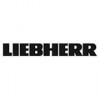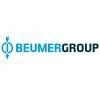


i
Ultra
Corpotech
Work with us
![]()
Filter interviews by
Ultra Corpotech Interview Questions and Answers
12 Interview questions
The 7 QC tools are essential techniques for quality control and improvement in various industries.
1. Cause-and-Effect Diagram: Also known as a fishbone diagram, it helps identify root causes of a problem. Example: Analyzing reasons for product defects.
2. Check Sheet: A structured form for collecting and analyzing data. Example: Tracking the number of defects in a production line.
3. Control Chart: A graphical tool ...
I have used various testing instruments for quality assurance, including automation tools and performance testing software.
Selenium for automated web application testing.
JMeter for performance and load testing of applications.
Postman for API testing and validation.
JIRA for tracking bugs and managing test cases.
TestRail for test case management and reporting.
ACB stands for Air Circuit Breaker, which is a type of circuit breaker that operates in the air as an arc extinguishing medium.
ACB is used to protect electrical circuits from overloads and short circuits by automatically disconnecting the power supply when a fault is detected.
It consists of a set of contacts that open and close to interrupt or allow the flow of current.
ACBs are commonly used in industrial and comm...
Miniature Circuit Breaker (MCB) is a type of circuit breaker that automatically switches off electrical circuits during abnormal conditions.
Single Pole MCB
Double Pole MCB
Triple Pole MCB
Four Pole MCB
Miniature Circuit Breaker with Overcurrent Protection (MCBO)
Residual Current Circuit Breaker with Overcurrent Protection (RCBO)
The least count of a vernier caliper can be found by dividing the smallest division on the main scale by the total number of divisions on the vernier scale.
Divide the smallest division on the main scale by the total number of divisions on the vernier scale
Example: If the smallest division on the main scale is 0.1 mm and there are 10 divisions on the vernier scale, the least count would be 0.1 mm / 10 = 0.01 mm
QA focuses on preventing defects in the process, while QC focuses on identifying defects in the product.
QA is process oriented, focusing on preventing defects by implementing processes and standards.
QC is product oriented, focusing on identifying defects through inspections and testing.
QA involves activities like process audits, training, and documentation.
QC involves activities like product inspections, testing, ...
PPM (Parts Per Million) is calculated by dividing the number of defective units by the total number of units produced, then multiplying by one million.
Calculate the number of defective units.
Calculate the total number of units produced.
Divide the number of defective units by the total number of units produced.
Multiply the result by one million to get the PPM value.
Weight can be calculated by multiplying the mass of an object by the acceleration due to gravity.
Weight = mass x acceleration due to gravity
The standard acceleration due to gravity on Earth is 9.81 m/s^2
For example, the weight of a 10 kg object on Earth would be 10 kg x 9.81 m/s^2 = 98.1 N
CNC machines can have 3, 4, or 5 axis depending on the complexity of the machine.
CNC machines use axes to control the movement of the cutting tool.
3-axis machines can move the tool in the X, Y, and Z directions.
4-axis machines can also rotate the tool around the X-axis.
5-axis machines can tilt the tool and rotate it around the Y and Z axes.
The number of axes determines the complexity of the machine and the types o...
GD&T stands for Geometric Dimensioning and Tolerancing.
GD&T is a system used to define and communicate engineering tolerances and specifications.
It uses symbols and annotations to convey information about the size, shape, orientation, and location of features on a part.
GD&T is commonly used in manufacturing and engineering industries to ensure that parts are produced to the correct specifications.
Examples of GD&T ...
Ultra Corpotech Interview Experiences
16 interviews found
(5 Questions)
- Q1. Mechanical Engineer
- Q2. Ms.office and advance Excel
- Q3. Autocad, machine design
- Q4. Ms office formula, advance Excel formula
- Q5. Python programming language
Python programming, Javascript, c programming
(2 Questions)
- Q1. What is ppm? And how to calculate?
- Ans.
PPM stands for parts per million, a unit of measurement used to express very small concentrations of substances in a mixture.
PPM is calculated as (mass of solute / total mass of solution) * 1,000,000
For example, if a solution contains 5 grams of solute in 10,000 grams of solution, the PPM would be (5 / 10,000) * 1,000,000 = 500 PPM
PPM is commonly used in various industries such as manufacturing, environmental monitorin...
- Q2. How to find a least count of vernier caliper
- Ans.
The least count of a vernier caliper can be found by dividing the smallest division on the main scale by the total number of divisions on the vernier scale.
Divide the smallest division on the main scale by the total number of divisions on the vernier scale
Example: If the smallest division on the main scale is 0.1 mm and there are 10 divisions on the vernier scale, the least count would be 0.1 mm / 10 = 0.01 mm
(2 Questions)
- Q1. What is your salary expectation
- Ans.
My salary expectation is based on my experience, qualifications, and the industry standard for QA QC Engineers.
Consider my years of experience in QA QC roles
Take into account my relevant qualifications and certifications
Research the industry standard salary range for QA QC Engineers
Be open to negotiation based on the overall compensation package offered
- Q2. What is your previous salary in hand
- Ans.
I am not comfortable sharing my previous salary in hand.
I prefer to focus on the value I can bring to this role rather than my previous salary.
I believe my skills and experience are more important than my previous compensation.
I am looking for a competitive salary based on industry standards and my qualifications.
Interview Preparation Tips
I appeared for an interview before Jun 2024, where I was asked the following questions.
- Q1. Can you describe the process you followed in your most recent job?
- Ans.
In my last role, I implemented a structured QA process to enhance product quality and streamline testing procedures.
Conducted requirement analysis to understand project specifications and quality expectations.
Developed test plans and test cases based on functional requirements, ensuring comprehensive coverage.
Executed manual and automated tests, identifying defects and documenting them in a tracking system.
Collaborated...
- Q2. What are the types of threads
- Ans.
Threads are essential components in programming, enabling concurrent execution in software applications.
1. User Threads: Managed by user-level libraries, allowing for efficient context switching. Example: Java threads.
2. Kernel Threads: Managed by the operating system, providing better scheduling and management. Example: POSIX threads.
3. Lightweight Processes (LWPs): A hybrid of user and kernel threads, allowing multip...
- Q3. Define 7 QC tools
- Ans.
The 7 QC tools are essential techniques for quality control and improvement in various industries.
1. Cause-and-Effect Diagram: Also known as a fishbone diagram, it helps identify root causes of a problem. Example: Analyzing reasons for product defects.
2. Check Sheet: A structured form for collecting and analyzing data. Example: Tracking the number of defects in a production line.
3. Control Chart: A graphical tool to mo...
- Q4. What is your in hand salary expectation
- Ans.
I expect a competitive salary based on industry standards and my skills, ideally in the range of $50,000 to $60,000 annually.
Research industry standards: For a Junior Quality Engineer, salaries typically range from $50,000 to $70,000 depending on location.
Consider my skills: I have experience with automated testing tools like Selenium, which can justify a higher salary.
Location matters: Salaries can vary significantly ...
- Q5. What are the instruments do you have used
- Ans.
I have used various testing instruments for quality assurance, including automation tools and performance testing software.
Selenium for automated web application testing.
JMeter for performance and load testing of applications.
Postman for API testing and validation.
JIRA for tracking bugs and managing test cases.
TestRail for test case management and reporting.
I appeared for an interview in May 2025, where I was asked the following questions.
- Q1. About quality standards, weld symbols, inspection activity
- Q2. Welding and fabrication knowledge
Interview Preparation Tips

(13 Questions)
- Q1. All abou ur technical questions
- Q2. All cnc line questions,like wt r offset type,, insert angles, insert company names, related cnc 2d program like this only
- Q3. Types of cnc,wt type of axis
- Q4. Which controls having in cnc
- Q5. Wt is turning cycle,wt facing cycle,wt is threading cycle,
- Q6. Insert description, tool description,
- Q7. Wt is g codes,wt is mcodes,
- Q8. How to develop new part on cnc
- Q9. Wt r opration in cnc
- Q10. How to calculate angle
- Q11. How to calculate cycle time
- Q12. Wt is cutting speed,feed, depth of cut,
- Q13. Wt r tool type in cnc
Interview Preparation Tips
(2 Questions)
- Q1. Last experience
- Q2. Current knowledge & capabilities
I appeared for an interview before Feb 2024.
(2 Questions)
- Q1. What is the types of MCB
- Ans.
Miniature Circuit Breaker (MCB) is a type of circuit breaker that automatically switches off electrical circuits during abnormal conditions.
Single Pole MCB
Double Pole MCB
Triple Pole MCB
Four Pole MCB
Miniature Circuit Breaker with Overcurrent Protection (MCBO)
Residual Current Circuit Breaker with Overcurrent Protection (RCBO)
- Q2. What is the working of ACB
- Ans.
ACB stands for Air Circuit Breaker, which is a type of circuit breaker that operates in the air as an arc extinguishing medium.
ACB is used to protect electrical circuits from overloads and short circuits by automatically disconnecting the power supply when a fault is detected.
It consists of a set of contacts that open and close to interrupt or allow the flow of current.
ACBs are commonly used in industrial and commercia...
I applied via Walk-in and was interviewed in Apr 2024. There were 2 interview rounds.
My attitude and beveoir check
Family discussions and my profile
Interview Preparation Tips
(1 Question)
- Q1. About planning ,
I applied via Walk-in and was interviewed in May 2023. There were 3 interview rounds.

(1 Question)
- Q1. All mechanical instrument knowledge and drawing first angle and third angle
(1 Question)
- Q1. Instrument measured related question
Top trending discussions






Ultra Corpotech Interview FAQs
The duration of Ultra Corpotech interview process can vary, but typically it takes about less than 2 weeks to complete.
Tell us how to improve this page.
Ultra Corpotech Interviews By Designations
- Ultra Corpotech Quality Engineer Interview Questions
- Ultra Corpotech Electrical Maintenance Engineer Interview Questions
- Ultra Corpotech Engineer Interview Questions
- Ultra Corpotech NPD Engineer Interview Questions
- Ultra Corpotech Data Analyst Interview Questions
- Ultra Corpotech Fabrication Engineer Interview Questions
- Ultra Corpotech QA QC Engineer Interview Questions
- Ultra Corpotech PPC Engineer Interview Questions
- Show more
Interview Questions for Popular Designations
- Team Lead Interview Questions
- Software Engineer Interview Questions
- Consultant Interview Questions
- Graduate Engineer Trainee (Get) Interview Questions
- Associate Software Engineer Interview Questions
- System Engineer Interview Questions
- Data Analyst Interview Questions
- Manager Interview Questions
- Show more
Overall Interview Experience Rating
based on 27 interview experiences
Difficulty level
Duration
Interview Questions from Similar Companies
Ultra Corpotech Reviews and Ratings
based on 233 reviews
Rating in categories
|
Quality Engineer
91
salaries
| ₹3 L/yr - ₹6.5 L/yr |
|
Junior Engineer
81
salaries
| ₹2 L/yr - ₹5.2 L/yr |
|
Engineer
65
salaries
| ₹3 L/yr - ₹7.2 L/yr |
|
Senior Engineer
57
salaries
| ₹3.7 L/yr - ₹9 L/yr |
|
Assistant Manager
46
salaries
| ₹5.8 L/yr - ₹14 L/yr |
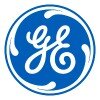
Ge India Industrial

Gilbarco Veeder Root
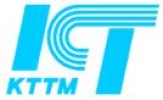
Kirloskar Toyota Textile Machinery
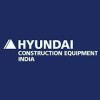
Hyundai Construction Equipment
- Home >
- Interviews >
- Ultra Corpotech Interview Questions

